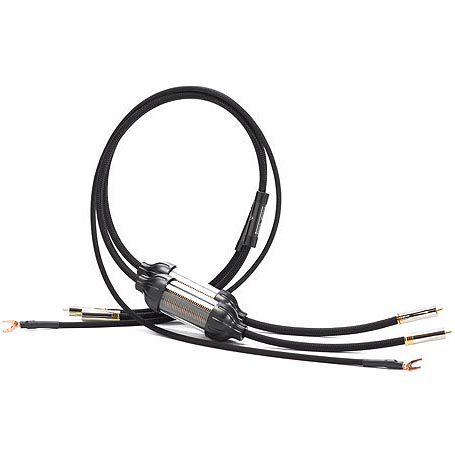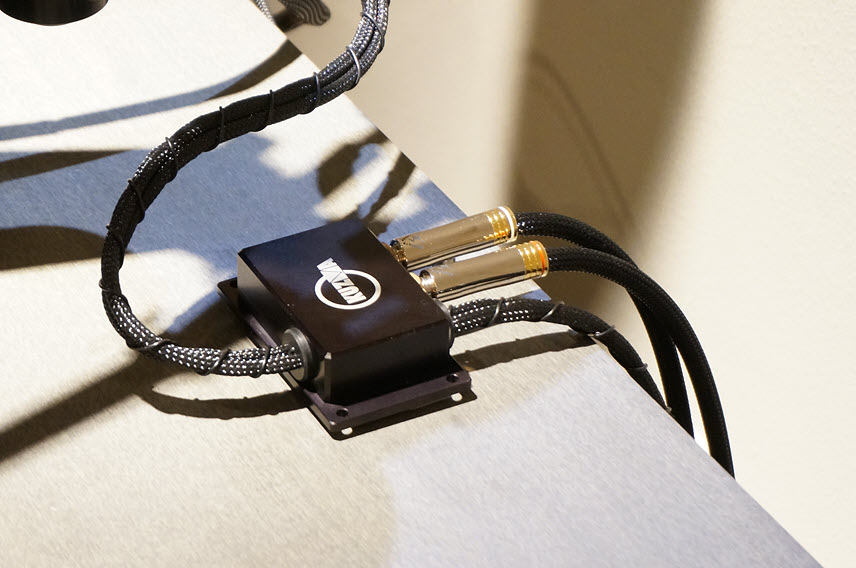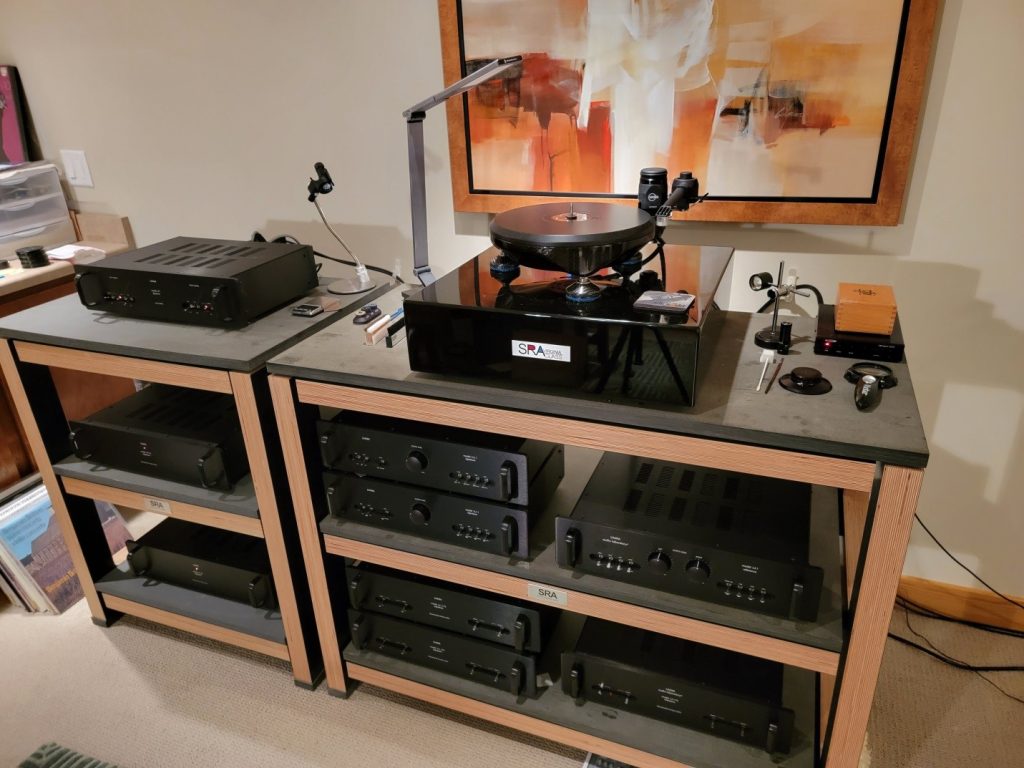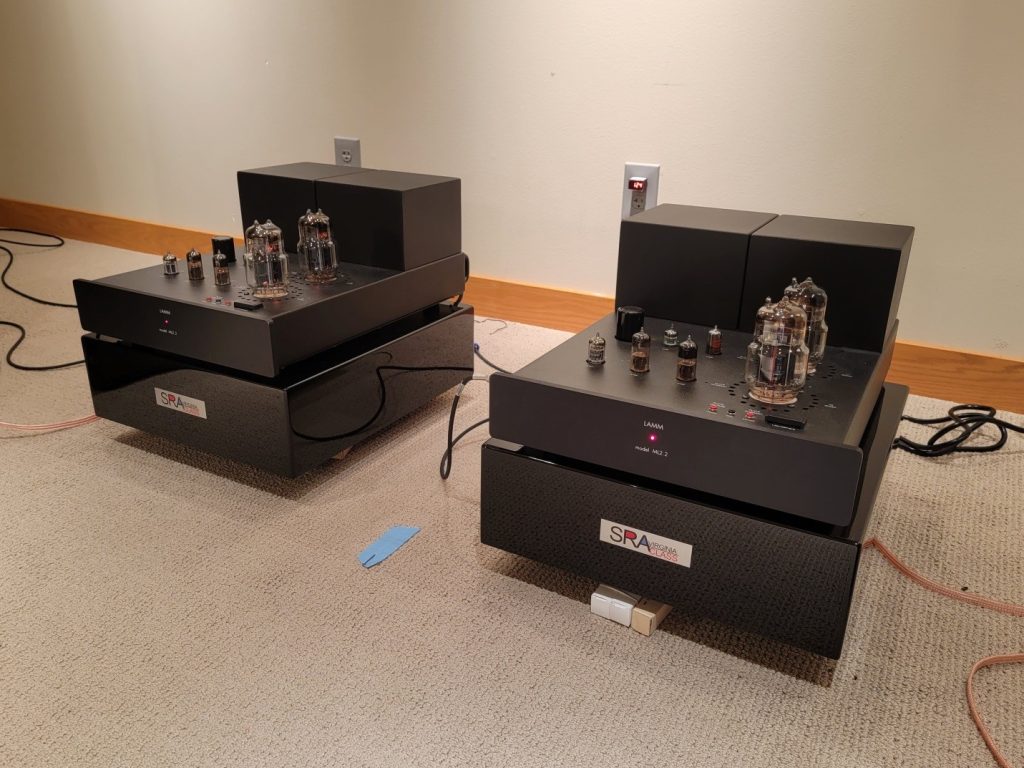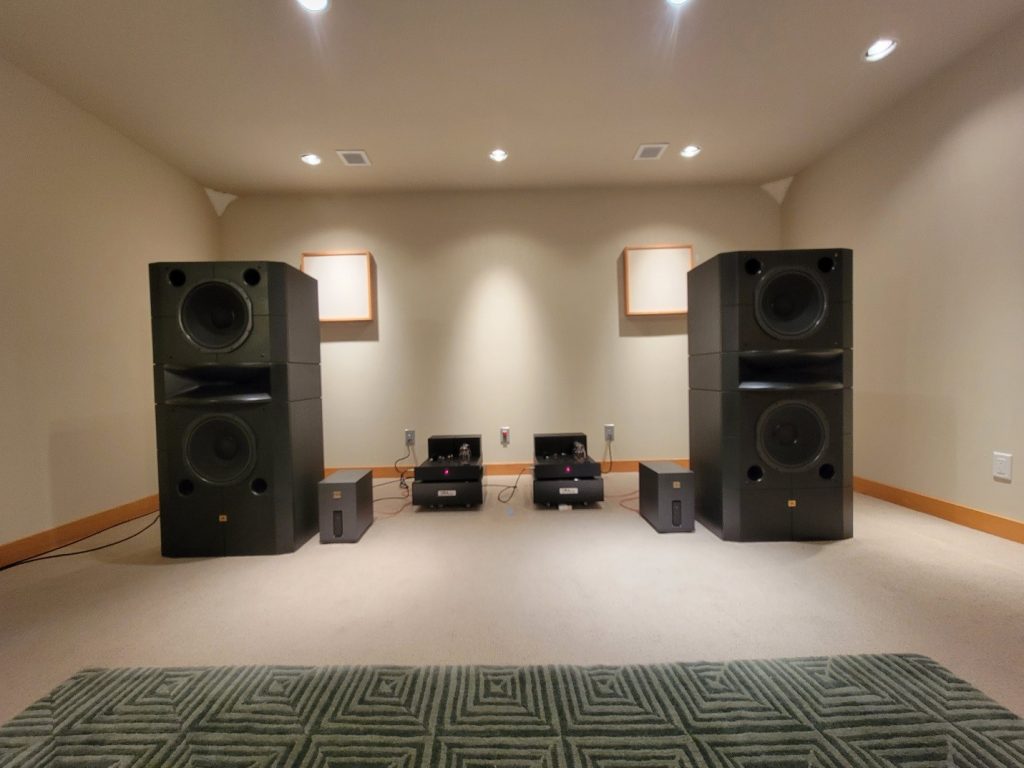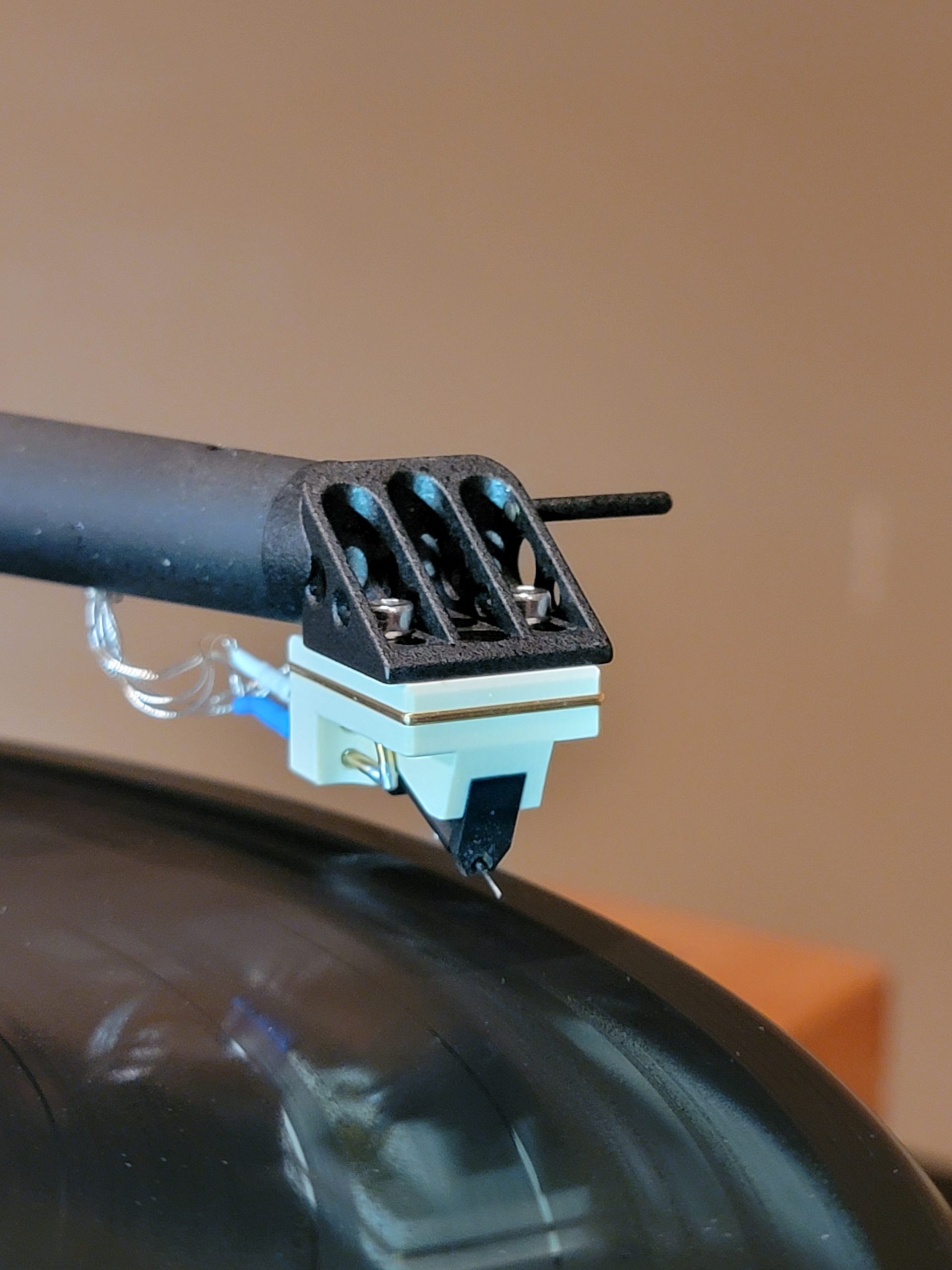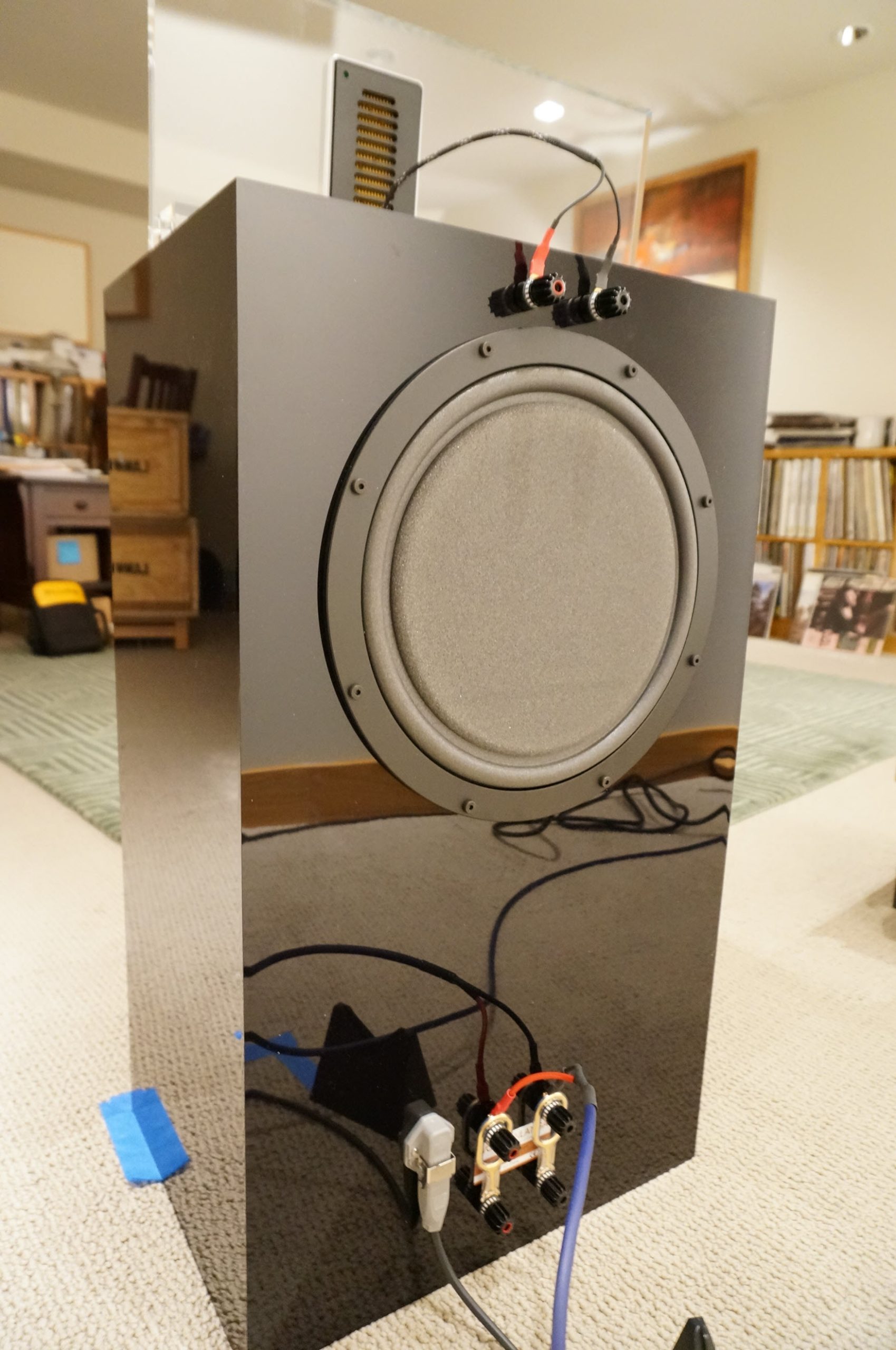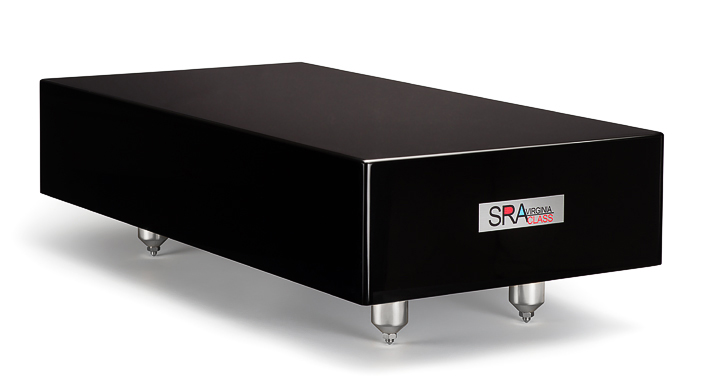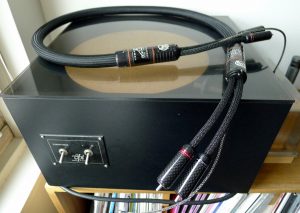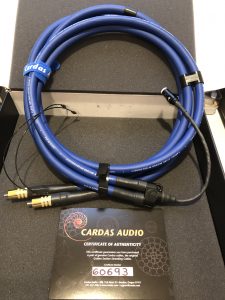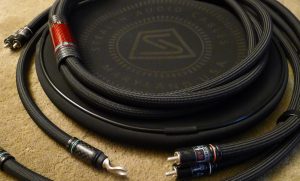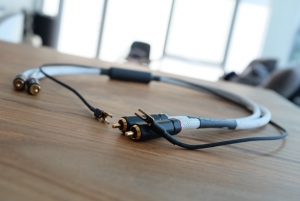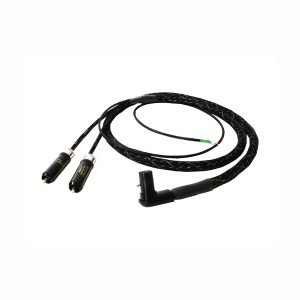I think of Shunyata Research as an investigative research center for signal and power transmission. And I suspect its principal scientist, Caelin Gabriel, has a lot of fun digging into how electricity works, down to the quantum level. After all, Gabriel spent his early career with the NSA, designing military systems to acquire extremely low-level signals obscured by noise—spy stuff. In private industry he did investigative research on 100MB/s and 1GB/s Ethernet devices. It's cool when hard scientists turn their talents to audiophile gear, especially when they are successful. Success? This year is Shunyata's twentieth anniversary.
Combining his love of high-end audio with his passion for research, Gabriel, along with sales and marketing director Grant Samuelsen, built Shunyata into one of audio's most respected providers of affordable signal cables, power cords, distributors and conditioners. (They are also active in pro-audio, while sister company Clear Image Scientific operates in the medical systems world.) If you remain one of audio's unwashed, thinking signal cables and power cords are so much reptile lubricant, spend a few minutes chatting with Gabriel. This guy not only has the intellectual chops, research findings, and patents to back up what he says, his company provides clear product information materials and oodles of on-line explanatory videos. Shunyata consistently demonstrates the reality of the technologies built into their products at audio shows and dealer showrooms. Whether you go for what they offer or not, Shunyata's demonstration materials are a boon for the information seeking audiophile. Straight forward with no BS, their live presentations offer a listener direct experiential evidence of the effectiveness of Gabriel's products.
As a hard core vinylista, I never really thought of Shunyata in conjunction with my analog front-end. Turns out they've quietly made phono cables for years; they just don't make a big deal about it. Some people will claim, because of the unique position of phono cables in the audio chain, that these cables have unique requirements for their design and construction. After all, we are told, the signal from a phono cartridge is very small and damages easily; it requires special attention. That is true. Yet Shunyata is different; they believe the requirements of a standard interconnect are no less critical than a phono cable. They build their other signal cables with the same quality and technologies found in their phono cables.
The Sigma Phono Cable delivers a repertory of highly specialized innovations (protected by five international patents) aimed directly at getting its signal delivered original and intact. Sigma is the top model in Shunyata's current lineup, followed by the Alpha, Delta, and Venom lines. All these cable lines share a common set of quality conductor metals with specific characteristics. As you move up the four-step hierarchy from Venom to Sigma, each succeeding line gains features and technologies. Each feature brings a little more quiet, a little blacker background. As noise and distortion reduce, more and more information emerges from within the original signal.
Wired Up
Metal is not a big differentiator in Shunyata cables; they simply choose the purest copper you can buy and make all their cables from it. That is highly refined C10100 copper which has silver impurities removed, its oxygen content reduced to .00005%, and a minimum 101% conductivity rating. This oxygen-free electronic grade copper (OFE101) is at least 99.99% pure—there is none purer. Shunyata chooses Ohno Continuous Cast (OCC) copper which is cast in heated molds (rather than cold extruded) to yield a crystalline structure in the wire with minimal segmented grain.
Shunyata makes its signal conductors using a geometry devised by Gabriel that he calls VTX. Multiple wires wrapped in fluorocarbon dielectrics organize to form a tube; a virtual hollow core wire, but without the added stiffness and expense of hollow wire. Why do this? The fluctuating magnetic fields that surround a signal carrying conductor induce forces (eddy currents) within the wire that work against current flow, changing its density and forcing the current towards the wire's surface. As the frequency of the audio signal varies, this "skin effect" causes varying impedance (or conductivity) within the wire, meaning that some signal passes more easily than others. While opinions vary on audible impact, changing electromagnetic forces can lead to power loss or possibly time smearing of the audio signal. With the VTX wire topology current flows on the outside of the virtual tube, minimizing eddy currents and micro-distortions associated with skin effects. The capacitance of the Sigma Phono Cable is <32 picoFarads per foot.
A typical CD player (remember those?) has a signal output somewhere between 1.75 to 3.5 volts RMS. In an analog world festooned with low output moving coil cartridges, cartridges whose outputs seem to get smaller and smaller, the modern phono signal can be pretty darn small. A Hana MC cartridge has an output of 2mV, a Lyra Delos 0.6mV, an Ortofon Cadenza Black gives up 0.33mV, and output cited for both the Lyra Atlas SL and the Denon DL-103R clocks in at a mere 0.25mV. That 'mV' stands for millivolts—a millivolt is one thousandth of a volt; 0.25mV is 0.00025 of a volt. Tiny.
Once off the cartridge pins the low amplitude phono signal suffers its existence in a harsh environment of shifting magnetic and electrical forces capable of damaging it on its journey to a phono amp or step-up transformer. Since phono signals are primarily voltage and E-field dependent, they are particularly sensitive to external EMI and RFI interference. Obviously what we want is for the signal that left the cartridge to arrive intact at its first gain stage, unenhanced and unharmed. That's the phono cable's job and if it doesn't do that job, that tiny signal is handicapped even before you hear it. You've lost music before amplifying it. No amount of downstream electronica can ever restore that original signal. The phono cable may be the most important interconnect in your system.
The minuscule phono signal is very susceptible to a type of micro-distortion known as dielectric polarization or dielectric absorption and release. The Sigma Phono Cable features patented technology explicitly designed to combat this distortion. Shunyata calls it ΞTRON® technology (or XiTron, which is pronounced Zī-Tron and easier to type) and it is found exclusively in their Sigma and Alpha lines of cable.
When the current coming off the cartridge flows on the phono cable it generates an electromagnetic (EM) field that surrounds and penetrates the cable's conductor and insulation (dielectric.) When alternating current (AC) flows through an insulated phono cable it interacts with its insulation, polarizing the particles of the atoms of that insulation causing them to shift position while taking on energy according to the frequency and polarity of the signal at hand. As long as the AC polarity holds, the insulation acts as a capacitor, maintaining a charged field. You can imagine the dielectric retains energy as a shadow memory of the audio signal but shifted in the time domain. With the passage of time the polarity of the AC current alternates; that switches the polarity of the dielectric. Similar to how a capacitor works storing and releasing an electrical signal, this "dielectric relaxation" occurring at polarity switch releases the remembered energy, inducing tiny new currents within the conducting wire. These micro-currents are not part of the signal presently on the wire. Energy from the past (music if you will) invades the present signal and alters it; that's distortion.
The XiTron technology used in the Sigma Phono is ingenious. Around the VTX conductor Shunyata places a conductive shield, while a tiny circuit located inside the cable puts a simultaneous copy of the signal on that shield. (A second silver plated shield wraps around that shield, serving as the ground connection. The Sigma Phono is shielded.) Since an identical signal with the same polarity is on both phono wire and its interior conductive shield, the simultaneous charges in each repel, creating a near zero electric force within the dielectric material and effectively preventing it from taking on energy. The phono wire's insulation no longer acts as a capacitor and thus no longer takes on or releases stored energy to alter the audio signal when the AC current alternates. Voilà - micro-distortion averted.
Exclusive to the Sigma line is another Gabriel micro-distortion squashing invention he calls TAP. TAP stands for "transverse axial polarizer", a patent-pending innovation implemented as a clear elongated glass bulb holding a series of discs, with the cable running through the middle. I've seen active circuitry boxes on cables, but I'd never seen anything like this.
As a phono signal courses through its conductor there is an associated electromagnetic wave propagating not only through the conductor but outside the conductor along the length of the signal wire. That EM field surrounding the signal wire can adversely impact not only nearby electrical conductors and circuitry but the signal traveling through the wire itself.
The TAP device consists of gold plated copper disks in a spaced perpendicular array encapsulated in a tube fixed on the outside of the signal cable. The design and placement of the disks is critical and the device is mounted closer to the target end of the cable. There is no electrical contact between the TAP device and the conductor. Gabriel claims the device improves performance of the cable not by altering the signal as with network circuits but rather by eliminating a subtle form of micro-distortion.
There's no pretense of cocksure certainty out here on the cutting edge. I found it refreshing that Gabriel—ever the scientist—states that while the theory of operation "is currently under investigation, there is evidence that the apparatus functions as an electromagnetic polarizer." Gabriel theorizes that the metal discs mounted perpendicular to the cable interrupt or block the longitudinal EM wave running parallel to it. An EM wave traveling perpendicular to the cable, a transverse wave, would tend to pass through the TAP array. Shunyata claims that just as polarizing sunglasses allow certain waveforms to pass while blocking others and clarifying vision, TAP "uses electromagnetic polarization to improve sound quality in audio cables."
Starting with a pure OCC copper conductor, each of Shunyata's technologies found in the Sigma Phono Cable (VTX, XiTron, and TAP) works at minimizing injurious electromagnetic influences that can play on the fragility of the low-amplitude phono signal. Each is passive; there is no electronic tailoring or manipulation or customization of the audio signal. Each technology is significant on its own, but it is the accumulated affect of their combined application that gives the Sigma cable its personality. By removing noise on multiple levels Shunyata believes that more of any particular cartridge's original signal gets through to its first amplification. By refusing to add to or enhance signal information, the Sigma Phono yields the opposite of sonic homogenization. Based on its construction, one might characterize the Sigma's personality as humble, allowing the personality of each unique cartridge to speak for itself.
Phono Cable Break-in
So you're reading a forum on audio cables and a guy writes: "I just installed a pair of WhirledWyre 7.2s in my system and now it sounds like a frog. I'm afraid I made a mistake. Will it get better over time and how long does that take?" Cable break-in is a perennial topic. I've experienced it and believe it is a genuine phenomenon. Often taking double or triple digit hours, break-in can cause a cable to go, for example, from sounding dark or constricted to lively and open with better highs—and so on. Shunyata used to suggest plugging their power cords into a fan to break them in. Results can vary from one cable to another. I used to break-in my cables the old fashioned way—by using them.
As a vinylist you probably know that no cable is harder to break-in through normal use than a phono cable, and because of that no other cable is more in need of it. The signal emitted from a phono cartridge, particularly a low-output moving coil, is so low in voltage that the wire carrying it may never fully break in, no matter how many records you play. Do you really want to use up your cartridge breaking in a wire?
There are a variety of burn-in devices on the market that send sine-waves or square waves or other waves, with various measurements of voltage and current at different amplification levels through an audio cable. Some claim to exercise the dielectric, some claim to align the metal molecules. What previously took weeks or months of use can happen in a few days with a burn-in device and typically the before-after difference is an audible improvement. But that break-in process is not permanent and often you'll hear it requires renewal every so many months, suggesting that 'cooking' makes no lasting change to the fundamental nature of the cable.
No cable may benefit more than a phono cable from of one of Caelin Gabriel's latest innovations: the Kinetic Phase Inversion Process or KPIP. Researching cable burn-in, wire directionality, and the effects of cryogenic treatment on metal, Gabriel discovered an underlying core principle of which those phenomena are manifestations. Cables in Shunyata's top three lines (Delta, Alpha, and Sigma) receive treatment with the KPIP process. "It's not a cable cooker run at the factory. It's not a cryogenic treatment." (Shunyata has two expensive cryo tanks they used to treat prior generation cables. Those tanks are now only used to treat connectors and electrical contacts.) "KPIP alters the molecular structure of metal in a profound way that is permanent. It does not wear off or require re-treatment." Gabriel knew I wanted to know more about the science but that's all he could tell me; that and KPIP cannot be taken apart or reverse engineered. To protect his research, KPIP remains a proprietary process.
The company claims a KPIP'd cable will dramatically outperform the same interconnect without KPIP that was cryogenically treated and broken-in and used in a system for years or more. At audio shows and dealer events, Shunyata demonstrates the difference between a KPIP treated cable and one that is not; you can hear it for yourself. While all electronics, including cables, usually require a few days to acclimate themselves from travel to their new environment, new position, room temperature, etc., you can consider the Sigma Phono Cable broken-in after that settling period. You'll know its true character almost out of the box. To my knowledge that's an industry first for phono cables, or any cable for that matter.
One more thing worth passing along: Shunyata wants to caution users not to use cable cookers, burn-in devices, or cryogenic treatment on Shunyata cables, cords, or power conditioners that went through the KPIP process. Such treatments will degrade the performance of those products. The only way to reverse their negative impact is to return the product to the factory for KPIP processing. In the case of cryo treatment, the damage may be irreversible to insulation materials.
Configuration and Use
I used the Sigma Phono Cable with an 11" Kuzma 4Point tonearm mounted to a Grand Prix Audio Monaco 2.0 turntable and used both Lyra Etna and Benz Micro LP S cartridges during the evaluation. Coming off each of the Kuzma 4Point's cartridge clips are two wires, spiraling together inside the tonearm to emerge from the arms bearing tower where the bundle of eight tiny wires are encased in a protective sheath. A separate ground wire wrapped in dielectric attaches internally to the 'arm and winds around the outside of that sheath. The sheathed bundle runs about .43-meters where it enters a metal termination block. Inside that block, one wire from each cartridge clip pairs up with its channel mate to connect to a L/R pair of Cardas rhodium RCA inputs mounted on the block. These are the inputs available for a third-party tonearm cable; that's where I attached the Sigma. The remaining four wires from the cartridge clips come out sheathed from the termination block with the ground wire wrapped around them. These run for 1.4-meters, splitting at their end into two L/R male RCA Eichmann bullet plugs.
Thus, the Kuzma bi-wired arm provides the elegant option of operating with a third-party tonearm cable or using the 4Point's 2.1-meter wiring uninterrupted from cartridge clips to phono stage or transformer. The native 4Point tonearm wire is a silver-gold combination from Crystal Cable. As a regular interconnect, the Sigma Phono Cable is not as lithe and highly flexible as are some phono cables that plug directly into a tonearm, sometimes inside a turntable's plinth with a DIN connector. However many tonearms use a female RCA termination box for cable attachment (e.g. VPI) or offer it as an option (e.g. Tri-Planar, Kuzma.)
There was no attachment point for the substantial lug of the Sigma's separate ground wire on either the 4Point or its termination box, so I attached the native 4Point ground wire to the grounding post on my Audio Research Reference Phono 10 phonostage. I hoped to have both phono cables simultaneously connected to the dual inputs of the Ref Phono 10 so I could A/B them with the remote, but that configuration led to a bit of noise, so only one pair of phono cables was connected at a time. Apart from the tonearm cable, the rest of my signal cable system uses Shunyata Sigma interconnects and speaker cable, except for a 7-meter run of Shunyata Anaconda interconnect from linestage to amps. Before listening I speculated on hearing pretty much more of the same, given my familiarity with Shunyata Sigma cabling. But, once again proving how critical is the phono cable to a system's overall sound, differences were obvious.
The Sound of a Wire
Across the frequency range the Sigma Phono Cable delivered rich, deep tonality with excellent articulation and weight. Listening to Richard Strauss' Thus Sprach Zarathustra performed by Fritz Reiner and the Chicago Symphony (RCA/Classic Records LSC-1806), dynamic contrasts were on full display. Starting with a bone shaking pianissimo double low C (32Hz) organ note with accompanying low string basses, dawn breaks over the horizon. Music comes roiling up from the depths peaking in a powerful proclamation launched by trumpets and colossal hammering timpani strokes. From lows to highs, sheer orchestral power unfolds before you in a 21 bar challenge to any audio system. With the Sigma Phono in place I heard this music endowed with unmitigated authority and life.
Opening trumpets were both metal brilliant and sweetly brassy. High brass was never strident, etched or thin; I never once winced at the high-most notes, though I have before. The full raspy crunch of attack from powerful trombones was obvious, along with that special variance of intonation that comes as their slides moved from note to note. The friction of rosiny bows on cellos and double bass strings offered a bit of grit and texture to musicians' bowing action. As Zarathustra proceeded, oboes, bassoons, clarinets and English horns brought interior light, crisp, and clearly intonated, each with its own unique pitch. Attacks against reeds were distinct and obvious. The full power and delicacy of the orchestral panoply was on display as the sun came up.
Other than Wagner, no other composer sends mass violins higher and higher again than Richard Strauss. By sections their shimmery smooth sweet sound went up and up and up, as string harmonics lifted even higher to float above the orchestra. From initial attack through sustain and decay tonality prevailed without wavering or thinning as notes evaporated into the ether.
From that massive opening organ note my sense of venue context was strong as back and side wall reflections evinced 'huge air' within a black background from a listening position that may have been the loge. My sense of a large orchestra in a hall grew as instrumental groups entered their parts. Accompanying reflections off side and back walls fleshed out my sense of venue, as if backlighting each group's arrival. Soundstage width went wall-to-wall across my 17-foot wide listening room and my sense of depth and height helped me easily 'see' the orchestra laid out before me. Strauss' cosmic tone poem never sounded better.
With the Sigma Phono installed, my system's non-Shunyata wiring reduced to less than a meter. Although it added an additional connection point at the termination box I sensed no impact on resolution. I was hearing as full a Sigma loom as my system could support and although the overall wire length is small the Sigma Phono Cable made a clear difference. Intellectually I knew there was less distortion. My listening description of Zarathustra tells you what I heard. Hearing serves as the best kind of evidence of how the Sigma Phono performed.
Sometimes we audiophiles talk about a black or blacker background. Black is not a sound, and despite what Paul Simon and Art Garfunkel told us, neither is silence. Sometimes the claim of a black background is about the overall backdrop against which a performance occurs, or portrays the sonic 'space' behind or on either side of a note. Sound is so hard to describe in words, we tend to lapse into visual metaphors. When one audiophile says "component X has a blacker background than component Y" I take that as a rough attempt to describe an aural experience rather than a visual one. But, experiencing Black (especially in degrees, i.e. Blacker) is something more than the absence of music. Ultimately it may be talk about noise and its absence, or perhaps the relative corruption of silence by noise.
Inserting the Sigma Phono Cable into my system reduced noise. Aurally that cashed out as a slightly blacker background against which more music emerged. The definition of a musician's dimensional place in the sound field became better defined, less fuzzy on the edges. Soundstage depth with accompanying aural images was more obvious, slightly less smeared. I became better aware of musicians' articulations and techniques. There was a slightly finer grained definition of both dynamic impact and sound's dynamic gradient, between soft and softer as it were. I was somewhat surprised I could hear the differences from changing a single meter of wire, but this is what the Sigma cables do—they reduce distortion and allow more of the original signal to emerge from behind the noise that rode upon it.
By contrast, the Kuzma/Crystal Cable phono cable that the Sigma replaced was tonally lighter, a bit cooler and angular. The Sigma Phono was very slightly towards the warm side of the spectrum, more so in the lower frequencies. The Kuzma cable's highs and upper mids could be slightly forward, with an occasional peaky bit or touch of grain in that opening trumpet proclamation. It was quick and open, maybe a tiny bit faster than the Sigma and maybe a bit sharper on certain transients, though the relative beneficence of that sharpness varied by recording and occasionally it was too sharp. Replacing the Crystal Cable, the Sigma Phono offered slightly more clarity, transparency, air, and instrument separation, again to varying degrees depending on the music. In terms of my overall loom, the Sigma cables brought the same sonic fulfillment as the Sigma Phono while offering a genuine advance over my previous Shunyata Anaconda loom.
Both the Sigma and the Crystal cables offered fine detail resolution although the Sigma was a bit more harmonically complete. From triangles, celesta, and harps through mid and lower bass, the Sigma's fundamentals and harmonics were rich with tonal depth. Sonic differences were obvious as neither cable homogenized the sound of neither cartridges nor music. Overall, many of these differences were relatively small yet clearly audible when I heard the cables back to back. No single attribute really stood out over others which I took as the result of comparing short lengths of wire in a loom that was otherwise set. It was the accumulation of many small differences that told me the Sigma's true strength lay in its overall balance, in its sense of natural musical authenticity. When I went back and forth with the two wires, the Sigma always seemed a bit louder. These contrasts (not flaws) reveal the personalities of two different phono cables. Some may suggest they are the wire metal differences of copper versus silver but I believe the relatively greater tonal clarity and completeness I heard demonstrates less distortion from the Sigma.
Listening to Shostakovich's "Festive Overture" from the 3 LP set The Moscow Sessions with the Moscow Symphony Orchestra conducted by Lawrence Leighton Smith (Sheffield Lab TLP-1000) I experienced the propulsive drive and dynamic energy of this rowdy music—a real Russian plate spinner—truly vivacious music that gets your blood going. Pizzicato strings were tight with excellent transient attack. Timpani rolls were clear and distinct, their harmonics bouncing off the drum's skin into the air. I heard plenty of interior detail from woodwinds and strings riding beneath the brass. A long time ago I had the opportunity to play the featured clarinet parts in this music; they are some of the fastest and most difficult arpeggios in that instrument's repertoire. With the full Sigma loom in place, my system rendered the clarinet notes—as fast as they were—as individuated, clear without smear, as having a beautiful woody character. You could tell the Moscow orchestra had a really large-sized bass drum. The indefinite pitch of several giant whacks upon it had a proper sense of hollow weight. I felt its skins shake with the dynamic whumpf of woofer challenging impact.
As tempting as it might be to high-light this or that attribute, the Sigma Phono is noteworthy for its overall balance. The Sigma should be able to bring its lack of smear or grain and its abundance of clarity, frequency balance, tonality, depth, resolution, and generally natural character to any analog rig. Whether the Sigma Phono completes a Shunyata loom or starts a new one, I believe you will recognize its virtues. It's the best phono cable I've had in my system to date.
Sigma Phono Cable
Retail: $4700/1m including ground cable.
Shunyata Research
26273 Twelve Trees Lane
Poulsbo, Washington 98370
360.598.935
Warranty: Five years parts and labor.




